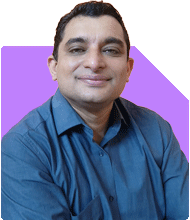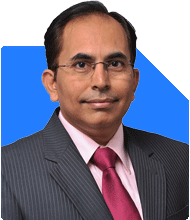I 40 years now and Just now i have invested lumpsum amount in following mutual funds- all are direct growth
1. Quant smalcap fund - Rs 300000
2. Quant midcap fund - Rs 300000
3. Nippon India muticap - Rs 200000
4. ICICI Pru bluechip fund - Rs 200000
5. Canara rabeco emerging eqt -Rs 50000
Just now started SIP in following funds.
1. Quant smalcap fund - Rs 4000
2. Quant midcap fund - Rs 4000
3. Quant Active fund - Rs 4000
4. ICICI Pru Debt & equity -Rs 4000
5. Parag perigkh flexicap - Rs4000
Is this funds are good for long run for a period of 10 years?. How much amount I can expect after 10 years. My goal is to Construct a own house after 10 years.
Ans: Congratulations on taking a significant step toward building your financial future by investing in mutual funds. At 40, you are making a smart move by planning for your long-term goal of constructing your own house. Your current investments and SIP (Systematic Investment Plan) choices reflect a well-thought-out strategy for wealth accumulation over the next 10 years. Let's evaluate and understand the potential of your investment portfolio in detail.
Understanding Your Lump Sum Investments
Diversification Across Market Capitalization
Your lump sum investments include a mix of small-cap, mid-cap, multicap, blue-chip, and emerging equity funds. This diversification helps in spreading risk and capturing growth across different market segments.
Small-Cap and Mid-Cap Funds: These funds have high growth potential but come with higher risk. Over a 10-year period, these funds can provide significant returns if the market conditions are favorable.
Multicap and Blue-Chip Funds: These funds invest across various market capitalizations, providing a balanced approach. Blue-chip funds, specifically, offer stability as they invest in well-established companies.
Emerging Equity Fund: Investing in emerging sectors can be beneficial as these sectors have the potential for substantial growth in the future.
Potential Growth and Risks
Investing Rs 3,00,000 each in small-cap and mid-cap funds shows a high-risk appetite, which can be rewarding over the long term. The Rs 2,00,000 investments in multicap and blue-chip funds provide a cushion against volatility, balancing the portfolio. The Rs 50,000 in the emerging equity fund is a strategic move to tap into new growth areas.
Systematic Investment Plan (SIP) Contributions
Regular Investment Discipline
Starting SIPs in multiple funds ensures a disciplined approach to investing, taking advantage of rupee cost averaging and compounding benefits.
Small-Cap and Mid-Cap Funds: Continuing SIPs of Rs 4,000 each in these funds reinforces your growth strategy. Consistent investments will help mitigate market volatility over time.
Active Fund: SIP of Rs 4,000 in an active fund shows your trust in fund managers' expertise to outperform the market.
Debt & Equity Fund: This balanced approach with a Rs 4,000 SIP ensures you have a mix of stability and growth.
Flexicap Fund: A Rs 4,000 SIP here provides flexibility to invest across various market caps, enhancing diversification.
Balancing Risk and Return
Your SIPs indicate a balanced approach towards growth and stability. By investing Rs 20,000 monthly across these funds, you are steadily building your corpus, reducing the impact of market fluctuations, and benefiting from potential long-term growth.
Evaluating Your Investment Choices
Long-Term Growth Potential
Your chosen funds have the potential to grow significantly over the next 10 years. Historical data suggests that well-managed mutual funds, particularly in small-cap and mid-cap categories, can offer impressive returns. However, they are also subject to market risks.
Importance of Active Management
Actively managed funds have the advantage of fund managers making strategic decisions to maximize returns. While passive funds like index funds simply track the market, actively managed funds aim to outperform. Your choice of actively managed funds reflects a desire for potentially higher returns through expert management.
Assessing the Disadvantages of Direct Funds
Direct mutual funds have lower expense ratios since they do not involve intermediary commissions. However, without the guidance of a Certified Financial Planner (CFP), you might miss out on professional advice, which can be crucial for optimizing your investment strategy. A CFP provides valuable insights and helps in tailoring your portfolio to meet specific goals.
Expected Returns and Goal Achievement
Potential Corpus After 10 Years
Predicting exact returns is challenging due to market volatility. However, based on historical performance, equity mutual funds have the potential to yield substantial returns over a decade. Assuming a conservative average annual return, your lump sum and SIP investments can grow significantly, helping you reach your goal of constructing a house.
Importance of Regular Review
It is essential to regularly review your portfolio with your CFP. This ensures your investments remain aligned with your goals and market conditions. Adjustments may be needed to optimize performance and mitigate risks.
Benefits of Working with a Certified Financial Planner
Professional Guidance
A CFP can provide personalized advice, ensuring your investment strategy aligns with your long-term goals. Their expertise helps in navigating market complexities and making informed decisions.
Tailored Investment Strategies
CFPs consider your risk tolerance, financial goals, and market conditions to design a tailored investment plan. They help in balancing your portfolio and ensuring it adapts to changing circumstances.
Investing is a journey that requires patience and persistence. It's commendable that you are planning for a significant goal like constructing your own house. Your disciplined approach through lump sum investments and SIPs shows a strong commitment to your future. Understanding the risks and rewards associated with your chosen funds is crucial, and it's great to see you taking proactive steps.
Final Insights
Your current investment strategy, with a mix of lump sum and SIP investments in diversified mutual funds, is well-suited for long-term growth. By maintaining this approach and regularly consulting with your CFP, you are on a promising path toward achieving your goal of constructing your own house in 10 years. Stay focused, keep reviewing your portfolio, and adapt as necessary to stay on track.
Best Regards,
K. Ramalingam, MBA, CFP,
Chief Financial Planner,
www.holisticinvestment.in





























